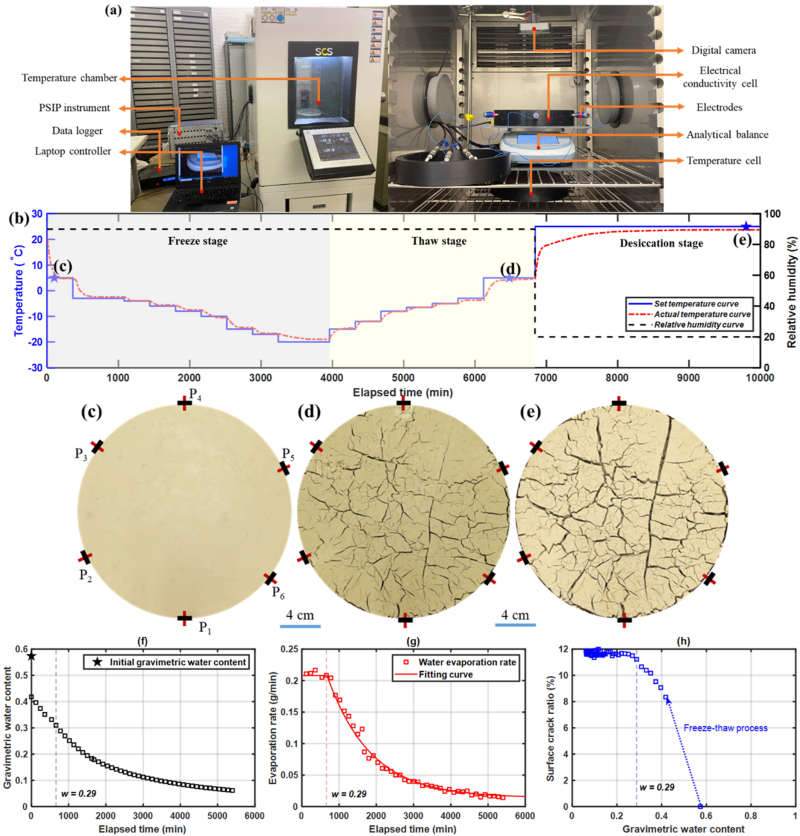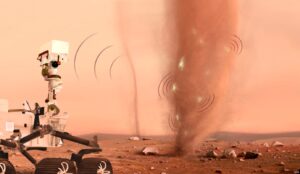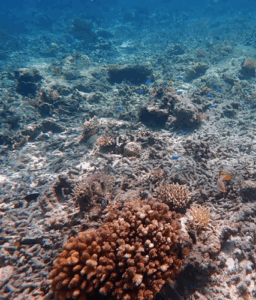Geophysics, a new “sense” for tracking clay deformation
Against a backdrop of climate change, the melting of permafrost poses numerous geotechnical risks, from landslides to the weakening of buildings and infrastructure. In this context, the phenomena of clay deformation, which are widely implicated in these risks, need to be carefully monitored. To this end, the geophysical toolbox is a powerful tool for the efficient monitoring of clay soils. A research team, involving a three-way collaboration between METIS, IPGP and GEOPS, has explored the contribution of geoelectrical measurements – in particular complex electrical conductivity – to non-invasive monitoring of pore structure and the electrochemical properties of interfaces in clay media.
A new device for measuring complex conductivity spectra
This is the first time that a study has investigated the effect of the type of cracking on the surface of a soil on complex conductivity under conditions of freeze-thaw cycles and desiccation. Experiments were carried out on clay samples under controlled conditions at the UMR METIS soil geophysics laboratory, in collaboration with IPGP and UMR GEOPS.
While the samples were subjected to freeze-thaw cycles followed by desiccation, several properties were monitored: water content, cracking surface (by camera) and complex electrical conductivity.

Experimental equipment, test conditions of temperature and relative humidity, evolution of water evaporation and soil surface cracking in the sample during the different experimental phases.
A clear relationship between conductivity and surface cracking
The results show that crack types dominated by Y-junctions form at the sample surface after freeze-thaw cycles, and that the crack network extends along existing cracks until desiccation ceases. Induced polarization measurements reveal that two components of complex conductivity are linearly sensitive to surface cracking rate and gravimetric water content. Moreover, they show a similar decay behavior over the drying time.
One step closer to real-life monitoring
This study demonstrates the usefulness of complex electrical conductivity for monitoring the development and propagation of cracks in clayey soils, paving the way for numerous applications for monitoring under real conditions, particularly on clayey slopes. These results are highly promising for the use of geoelectrical tomography temporal monitoring to better anticipate risks linked to water dynamics and soil cracking in a context of global change.
More
Reference
H. Luo, A Jost, J Thiesson, A Mendieta, E Léger, D Jougnot. Induced Polarization of Clay Under Freeze-Thaw Cycling and Desiccation Processes: Effect of Surface Cracking Propagation. Geophysical Research Letters, 2025.
Contacts
- Damien Jougnot, Laboratoire Milieux environnementaux, transferts et interactions dans les hydrosystèmes et les sols (METIS-IPSL) •
- Anne Jost, METIS-IPSL •
Source : CNRS Terre & Univers.





